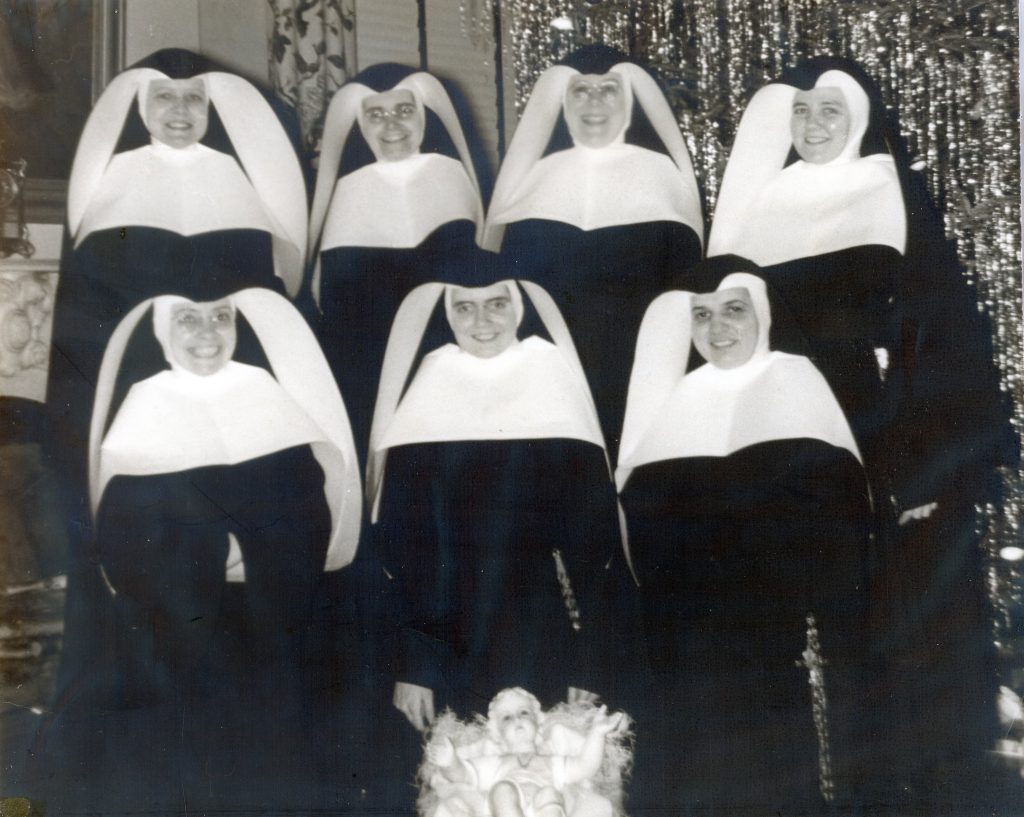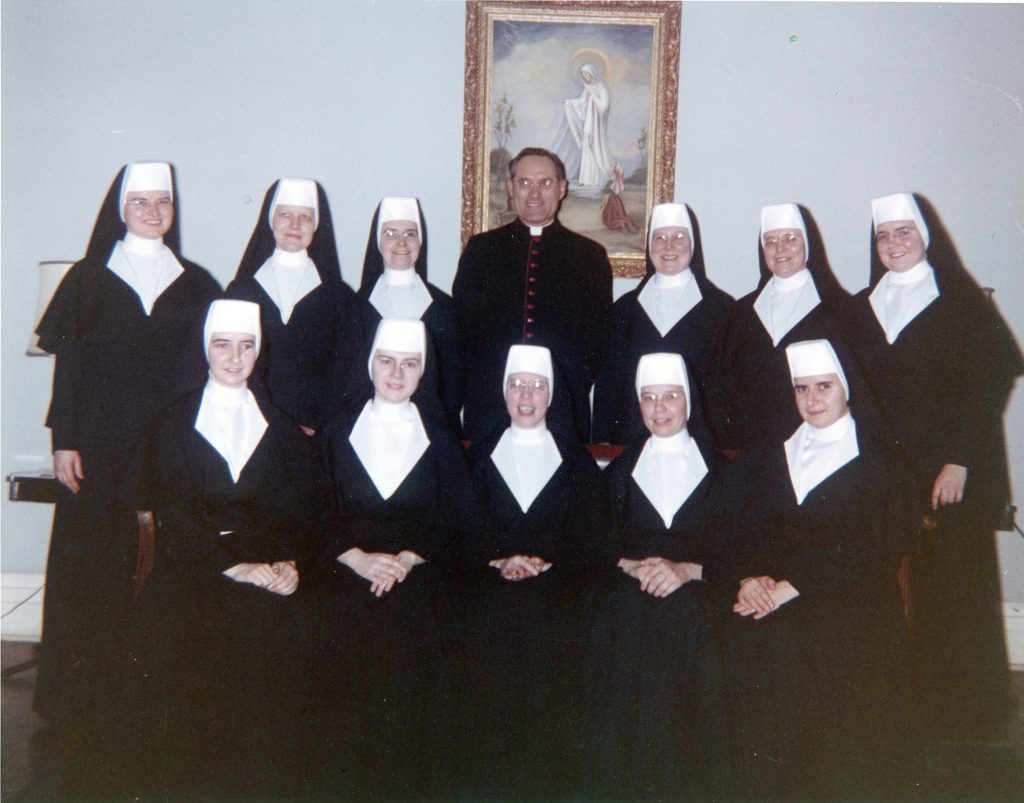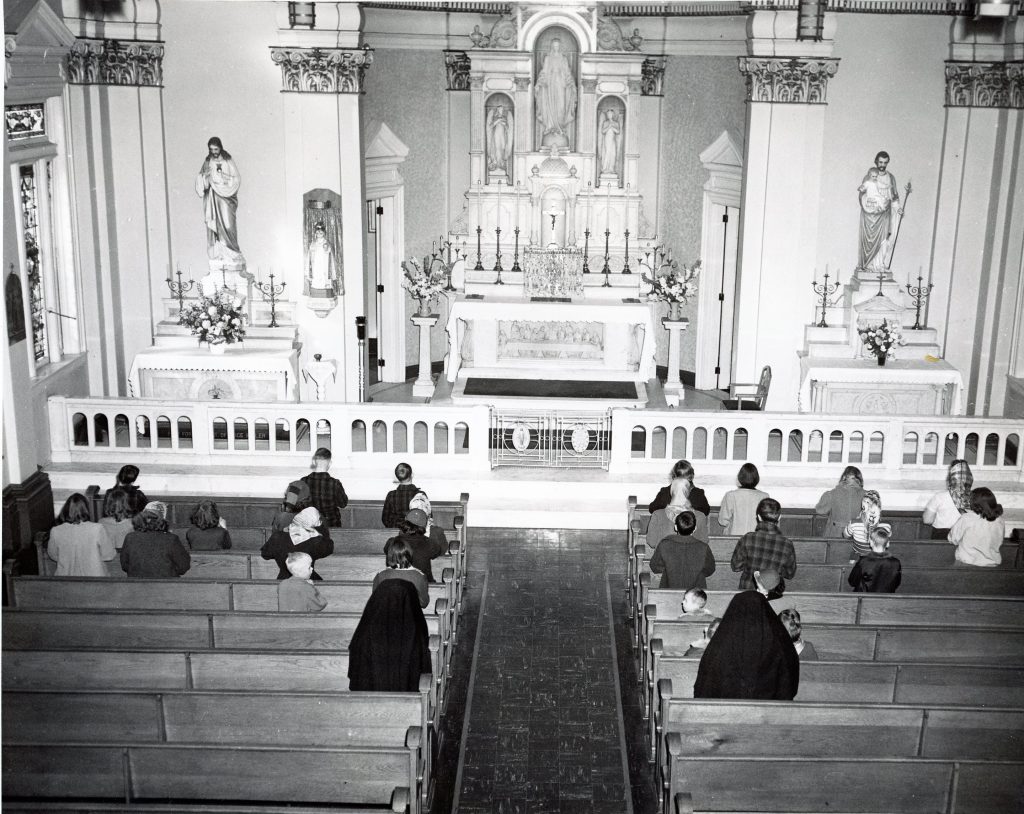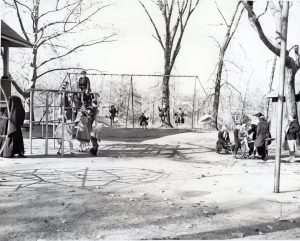By Grace Avila, Assistant Archivist
The School Sisters of Notre Dame (SSND) were established in Bavaria in 1833 by Mother Theresa Gerhardinger to provide children with a good education regardless of their background or social status. Mother Caroline Friess brought these same ideals to North America in 1847. Therefore, it was only natural for SSND to work with the Archdiocese of St. Louis Department of Special Education, the first Catholic-operated special education department, to open St. Mary’s Special School for Exceptional Children in 1952. It was likely the first residential school of its kind opened for children with developmental and intellectual disabilities by a Catholic Archdiocese in the United States.
This was only made possible with the help of Father Elmer H. Behrmann, who founded the Archdiocese of St. Louis Department of Special Education. The Department of Special Education officially opened in September 1950. Fr. Behrmann began his work in special education by contacting a local St. Louis newspaper to survey how many children with intellectual and developmental disabilities fell under the Archdiocese of St. Louis. He also enlisted the local parish children and their teachers to help distribute the survey. Five local parish schools donated their classrooms for special education instruction once Fr. Behrmann received the results of his survey. This included Epiphany School, Our Lady of Perpetual Help, St. Philip Neri School, Sacred Heart School, and St. John the Baptist School.
Fr. Behrmann contacted different women’s religious congregations for teachers. Four congregations wrote to him with sisters that could help, including Sister Lillian McCormick, SSND. Sister Lillian was hesitant about her ability to serve in this role, but after meeting with the parents of her future students, she saw how deeply devoted they were to their children and how much they wanted this program to succeed. Sister Lillian, along with Sister Agatha Joseph from the Sisters of St. Joseph, Sister Catherine Louis from the Dominican Sisters, Sisters Renata and Laurine from the Sisters of the Precious Blood, were the first teachers for the Archdiocese of St. Louis Department of Special Education.
Before officially opening their classrooms to students on September 8, 1950, the sisters had to undergo training since none of them had previous experience teaching students with intellectual and developmental disabilities. Fr. Behrmann and the sisters would meet regularly to discuss how the program progressed during those critical first few months. The sisters would continue strengthening their education by attending summer courses in 1951. The sisters’ goal was to offer a comfortable space for the children to foster the necessary skills to socialize and work in modern society while continuing to grow in their Catholic faith. A part of the sister’s curriculum included opportunities like work and vocational experiences and training on their civic responsibilities.
By 1952, Archbishop Joseph E. Rittner asked if the SSND would be willing to take control of a residential school program for children with intellectual and developmental disabilities. Archbishop Rittner had relied on the SSND for many years to staff local diocesan schools, so they were his first choice to staff this new special education school. After discussing this opportunity with Fr. Behrmann, the SSND agreed to establish this new residential school program. Saint Mary’s Home for Girls, a former orphanage run by the Daughters of Charity, became Saint Mary’s Special School for Exceptional Children. On August 23, 1952, three SSNDs, Sisters Lillian McCormack, Dona Lally, and Dolorine Dougherty, moved into St. Mary’s and received a warm welcome from Fr. Behrmann. By September 15, the sisters opened the school for 15 day students until they were ready to take on residential students. Since Sister Lillian had two years of experience as a special education teacher at Our Lady of Perpetual Help, she was the most experienced sister there to serve as principle of St. Mary’s Special School. Sisters Dona and Dolorine joined the staff as teachers. St. Mary’s consisted of a large four-story building on 10 acres of land, equipped with classrooms, offices, dormitories, chapel, dining room, kitchen, and community room. By the end of the first year, more SSND came to join the staff of St. Mary’s. This included Sisters Alex LeClerc Winkelmann, Vita Caronia and David Marie Fox. With the help of these new sisters, the residential program opened its doors for 36 students on September 20, 1953.
In 1958, Sisters Lillian, Dona, and Dolorine felt inspired to publish “The Come Catechism,” which explained the process of First Communion in easy-to-understand terms for the students at St. Mary’s. This much-needed book was heavily used at St. Mary’s and continued to be published into the 21st century. The sisters worked tirelessly over the next 33 years managing the classrooms and dormitories, day-to-day activities, meal planning, maintenance work, cleaning and organizing extracurricular activities for the students. For the rest of the sisters’ time at St. Mary’s, the average yearly enrollment was between 125 and 135 students.
St. Mary’s Special School was just one of many programs SSND felt called to establish for children with special needs. For example, in 1958, Sister Melmarie Stoll helped start a program at Holy Assumption in West Allis, Wisconsin, for children who were visually impaired. It was the only parish school in the state that taught students who were visually impaired alongside the other students. In 1960, Sister Matthew Marie Hulling began a special education day class at St. Peter’s in Jefferson City, Missouri. In 1962, the Archdiocese of New Orleans requested Sister Mary Vita Caronia, who’d worked at St. Mary’s for nine years, to establish a Department of Special Education in Baton Rouge, Louisiana.

Christmas, 1953 Top: (L-R) Sr. David Marie Fox, Sr. Dona Lally, Sr. Lillian McCormick, Sr. Alex LeClerc Winkleman; Bottom: (L-R) Sr. Dolorine Doughtery, Sr. Alvin Marie Hagan, Sister Anna Mary Caronia
Sister Lillian, who was instrumental in establishing St. Mary’s, left in 1964 to start St. Michael’s, a new special education school in New Orleans, Louisiana. The SSND continued serving at St. Mary’s until 1994, and the residential program remained open until 1998. No one can fully measure the overall impact of SSND at St. Mary’s. The sisters created a safe, nurturing, and comforting home away from home where these children could live, grow and learn. The long-term success of St. Mary’s is a testament to the sisters there and the SSND charism these women carried with them to serve the students at St. Mary’s Special School.
Sources:
Behrmann, Monsignor Elmer H. Ph.D. That They may be Lifted Up: History of the Department of Special Education, Archdiocese of St. Louis, 1950-2001. St. Louis. Kopytek, INC. 2001.
Pescay, Sr. Marie Mjella. Contributions to Special Education by School Sisters of Notre Dame in the United States. 1969. Texas Woman’s University. Master’s thesis.
This article is part of the School Sisters of Notre Dame North American Archives’ 175th anniversary celebration of SSND arriving in North America. Since July 2022, the staff at the North American Archives has celebrated this milestone each month by highlighting a particular sister, event or mission that has a unique place in the congregation’s history in the United States and Canada. Read all of the 175th anniversary stories here.



